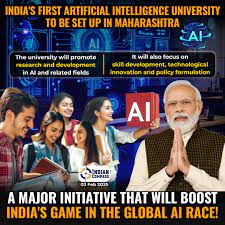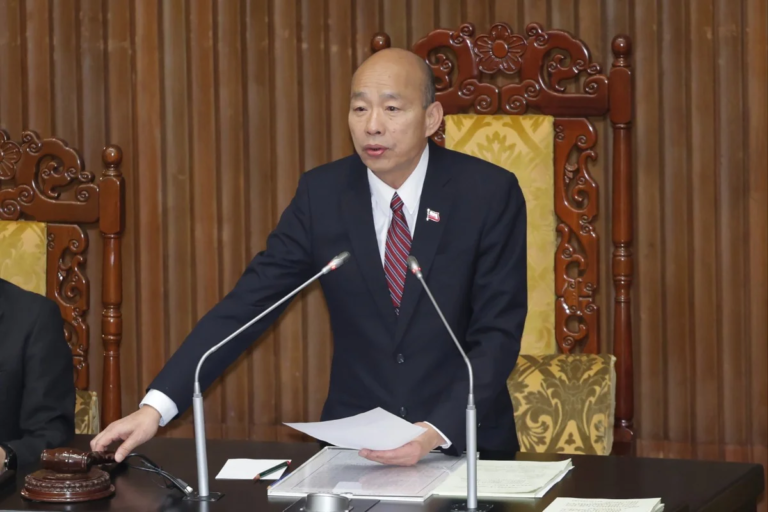
India stands at the cusp of a technological revolution, with Artificial Intelligence (AI) playing a pivotal role in shaping the nation’s future. As one of the fastest-growing economies in the world, India’s embrace of AI presents an opportunity to address some of its most pressing challenges while spurring innovation and economic growth.
The AI Landscape in India
India has emerged as a hub for AI development and innovation, thanks to its large pool of skilled professionals, burgeoning startup ecosystem, and increasing government support. From healthcare and agriculture to education and smart cities, AI is being deployed across various sectors to drive efficiency, enhance decision-making, and provide scalable solutions.
The Indian government’s National Strategy for AI, also known as #AIforAll, aims to leverage AI for inclusive growth and social impact. The strategy focuses on five key sectors: healthcare, agriculture, education, smart cities, and smart mobility. Under this vision, AI is being positioned as a tool not only for technological advancement but also for societal transformation.
Key Drivers of India’s AI Growth
- Talent Pool: India boasts one of the largest pools of STEM graduates in the world, making it an ideal breeding ground for AI talent. Institutions like the Indian Institutes of Technology (IITs) and Indian Institutes of Information Technology (IIITs) have introduced specialized AI programs to nurture future leaders in the field.
- Startup Ecosystem: India is home to a vibrant startup ecosystem, with numerous AI-driven companies working on innovative solutions. From conversational AI platforms to predictive analytics tools, Indian startups are making significant contributions to the global AI industry.
- Policy Support: Initiatives like the Digital India campaign and the establishment of AI research centers underline the government’s commitment to fostering AI innovation. Public-private partnerships are also helping bridge the gap between research and real-world application.
- Data Availability: With its large and diverse population, India generates massive amounts of data daily. This data serves as a valuable resource for training AI systems, enabling the development of localized and customized solutions.
Applications of AI in India
- Healthcare: AI is being used to improve diagnostics, predict disease outbreaks, and optimize treatment plans. For instance, AI-powered tools are helping detect diseases like cancer and diabetic retinopathy with greater accuracy and speed.
- Agriculture: AI-driven solutions are aiding farmers with crop monitoring, pest management, and yield prediction. These technologies are helping enhance productivity and reduce wastage.
- Education: Personalized learning platforms powered by AI are transforming education in India, making quality education more accessible to students in remote areas.
- Smart Cities: AI is playing a critical role in urban planning, traffic management, and waste management, contributing to the development of sustainable smart cities.
- Financial Services: From fraud detection to credit risk assessment, AI is revolutionizing India’s financial sector, making it more efficient and secure.
Challenges Ahead
Despite its progress, India’s AI journey is not without challenges. Issues such as data privacy, lack of robust infrastructure, and the digital divide need to be addressed. Additionally, there is a need to create ethical guidelines to ensure responsible AI deployment.
The Road Ahead
India’s AI awakening is not just about technological advancement; it’s about creating a future where AI serves as a force for good. By fostering collaboration between the government, academia, and industry, India has the potential to become a global leader in AI innovation. With the right investments in research, infrastructure, and talent development, the country can harness the power of AI to drive economic growth and improve the quality of life for its citizens.
As India embraces this transformative technology, it stands poised to not only shape its own destiny but also contribute significantly to the global AI ecosystem. The journey has just begun, and the possibilities are limitless.
DeepSeek has triggered a dramatic shift in the global AI race: it transformed the previously dominant framing of a China-U.S. AI rivalry into a broader global competition, especially among emerging powers in the Global South. This shift is particularly evident in India’s case.
DeepSeek’s overnight success significantly reshaped New Delhi’s perception of the AI landscape, resulting in concrete steps aimed at strengthening its position in the global AI competition. There have been notable shifts in India’s strategies and initiatives designed to foster the national AI innovation ecosystem, enabling it to compete with the United States and China through active engagement with Indian startups and entrepreneurs.
After DeepSeek: India’s New Perception of the AI Race
DeepSeek has fundamentally reshaped India’s perception of the AI race, sparking a wave of new debates. Chief among them is a renewed discussion about India’s relative position in global AI development.
Why is India lagging behind the U.S. and China in AI? Why hasn’t India produced AI advancements comparable to China’s DeepSeek or the United States’ ChatGPT? These concerns have become central to nearly all AI policy debates in India since the rise of DeepSeek. India’s IT Minister Ashwini Vaishnaw has frequently encountered these questions in recent public discussions. In other words, DeepSeek has ignited a broader critique of India’s positioning in the global AI landscape.
Concerns are growing that India risks becoming a digital colony of the U.S. and China, as both countries rapidly advance AI technologies that increasingly shape India’s technology landscape. This concern has been articulated by many policy experts, including Amitabh Kant, former CEO of India’s apex public policy think tank, NITI Aayog, and the G-20 Sherpa during India’s presidency. Writing for The Indian Express, Kant argued that DeepSeek symbolizes China’s advancements in AI, while ChatGPT reflects U.S. technological progress. Meanwhile, India remains primarily a user of these AI systems. This state of affairs raises critical concerns about India’s AI sovereignty and its capacity to develop homegrown AI technologies aligned with its cultural and economic priorities.
DeepSeek’s success also played a key role in shifting India’s AI strategy from a domestically focused approach to one with international and geoeconomic ambitions. India is now seeking to compete globally in AI development rather than concentrating solely on the implementation of AI tools within the Indian tech landscape.
Before DeepSeek, India saw AI primarily as a tool for domestic economic growth, particularly for achieving its targets of reaching 10 percent GDP growth by 2023 and creating a $1 trillion digital economy. However, these goals were more about leveraging existing tools domestically than about international competition or AI innovation. Now India is scaling up plans to compete at the global level, viewing AI as a critical industry from a geoeconomic, rather than simply economic, perspective.
More importantly, DeepSeek has instilled a sense of confidence among Indian policymakers that local startups and smaller investments can indeed drive AI innovation. Shortly after its release, Vaishnaw, India’s IT minister, hailed DeepSeek’s success, underscoring the fact that even smaller companies with relatively limited funding could compete with the heavily financed AI models produced by the global tech giants. His comments were seen as an indirect critique of Sam Altman, the chief executive of OpenAI, who visited India for the first time in 2023 and suggested that India should not attempt to build foundational AI models due to the high costs and resource-intensive nature of such technology
After the launch of DeepSeek, a new wave of enthusiasm emerged, buoyed by the belief that India can achieve AI breakthroughs with limited investments – similar to its success with the Digital Public Infrastructure model, which was not initially appreciated but was later adopted by other nations. This sentiment has been echoed by many policy advocates, who argue that DeepSeek has proven that Indian startups can compete with global AI tech companies like OpenAI. As they put it, “The AI arms race isn’t about money. It’s about hunger.”
The Indian State as a Financial Resource Provider
Against this backdrop, the Indian government has expanded its strategic role in strengthening the nation’s AI innovation ecosystem. By taking a more active leadership position, it aims to compete with other global AI leaders.
Following DeepSeek’s launch, governments around the world significantly increased their financial commitments, underscoring the strategic importance of AI investment. The Indian government’s latest budget, presented to Parliament shortly after the launch of DeepSeek, substantially increased the allocation for the India AI Mission – initially launched in 2024 – from approximately $66 million in the 2024-25 budget to around $240 million in the 2025-26 budget, an almost four-fold increase.
Moreover, as discussed below, the government announced various direct and indirect financial support measures aimed at bolstering the Indian private sector. Special provisions were also included in the Union Budget to develop key AI infrastructure and provide subsidies to startups for accelerated growth. These developments underscore the Indian state’s growing prominence as a significant financial supporter of AI development, especially in the post-DeepSeek era.
New State-Business Relations: Embarking on a New Type of Startup Capitalism
Beyond increasing the state budget for the AI mission, the Indian government has assumed a direct role in fostering AI development capable of competing with leading AI powers such as the United States and China.





